When we talk about defending in football, the focus is often on duels: tackles, interceptions, and blocks. But many of the world’s best defensive performances aren’t built on individual actions — they come from the collective ability to control space. This is where compactness becomes decisive.
A compact team is difficult to break down, forces opponents into less dangerous zones, and keeps defensive actions predictable. A stretched team, by contrast, leaves exploitable gaps and can be unpicked with a single pass or change of play.
What is Defensive Compactness?
Compactness refers to how closely a team stays together — both vertically and horizontally — when out of possession.
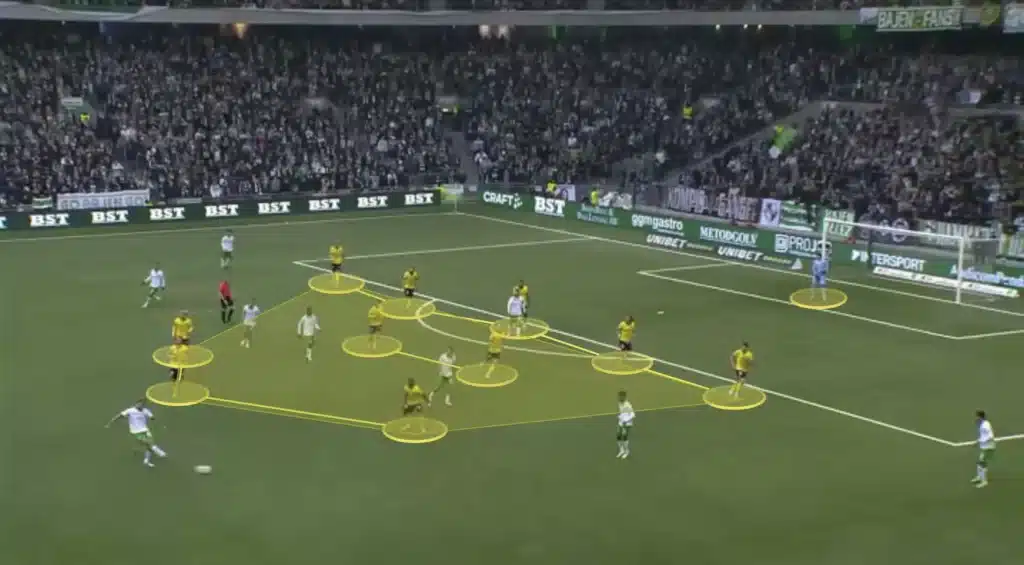
Horizontal Compactness
Horizontal compactness refers to how tightly players are positioned side-to-side within a defensive block. The aim isn’t just to stay narrow for the sake of it, but to close the lanes between defenders and midfielders that attackers look to exploit with line-breaking passes.
When a team maintains strong horizontal compactness, opponents are forced to play around the block rather than through it. This reduces access to central zones where creative players thrive and ensures that even if the ball goes wide, defenders can shift across together without leaving gaps in the middle.
Lose this compactness, however, and the consequences are immediate: one incisive pass through the lines can break multiple defenders at once and put the backline under direct threat.
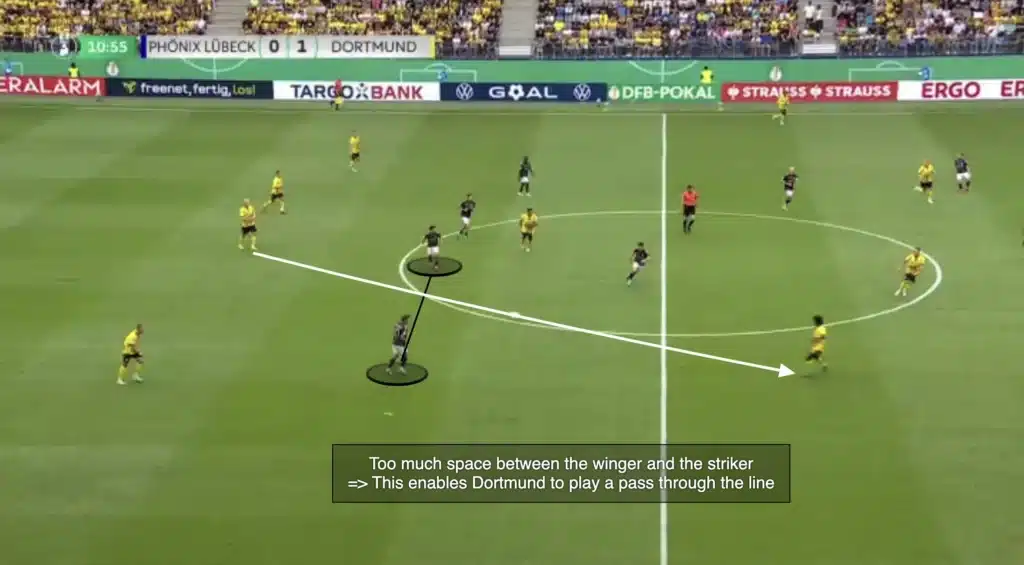
Vertical Compactness
Vertical compactness is about controlling the space between the defensive, midfield, and forward lines. The goal is to keep the team connected so that opponents cannot receive the ball freely between the lines or turn under little pressure.
When vertical distances are small, the pressing player always has cover behind them, and the team can stay aggressive without risking being bypassed.
Poor vertical compactness creates large pockets of space where playmakers can operate facing forward, or where midfield runners can receive passes on the half-turn and attack the backline at speed.
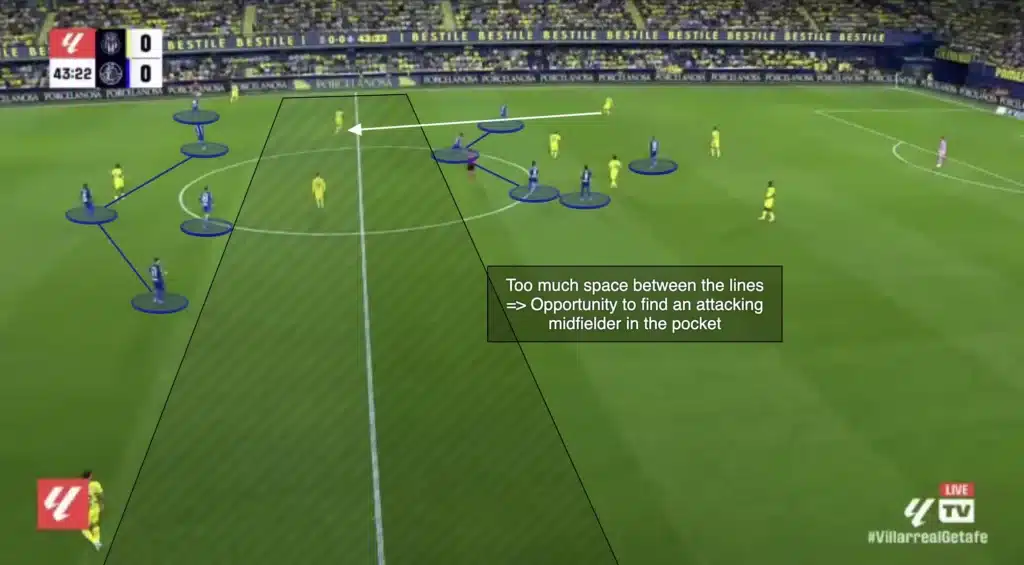
Compactness Across Phases
Compactness is not static — it shifts with the game state.
- In high-blocks: Vertical and horizontal gaps must be minimized so that pressing lines stay connected.
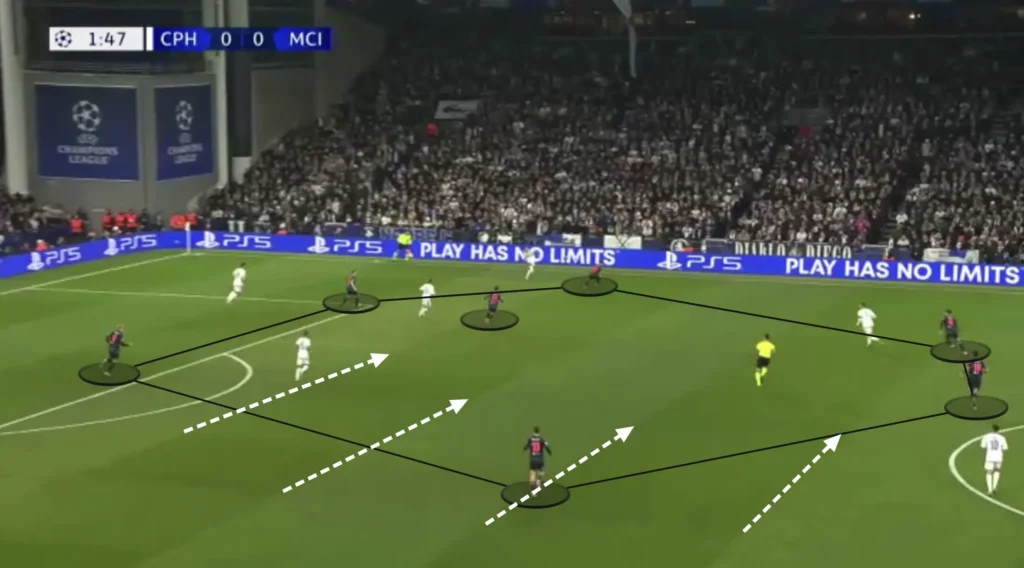
- In mid-blocks: Horizontal shifting becomes key, moving as a unit to deny passes into central zones.
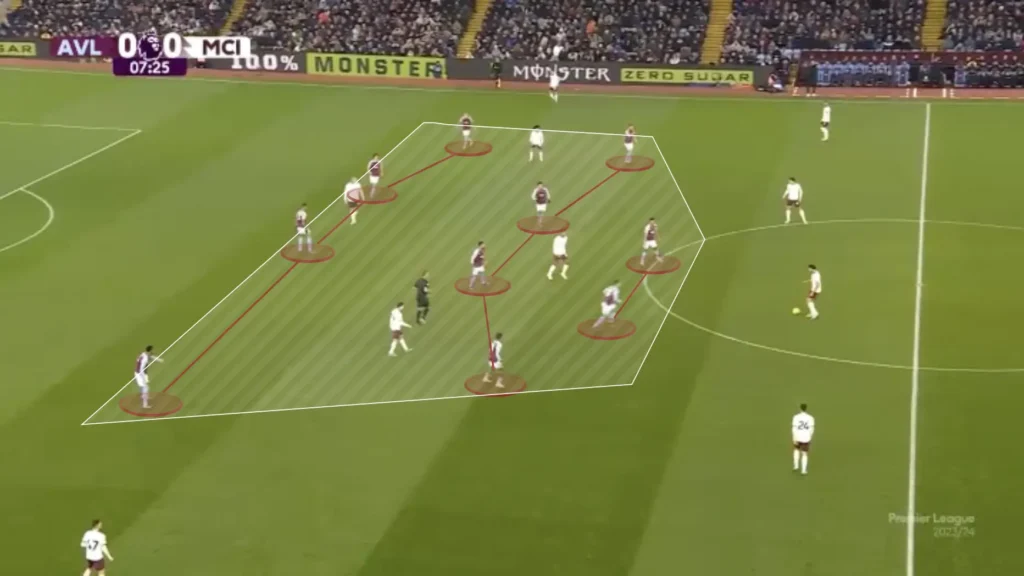
- In low-blocks: Teams aim to stay narrow and protect the box, forcing opponents wide and away from high-value shooting areas.
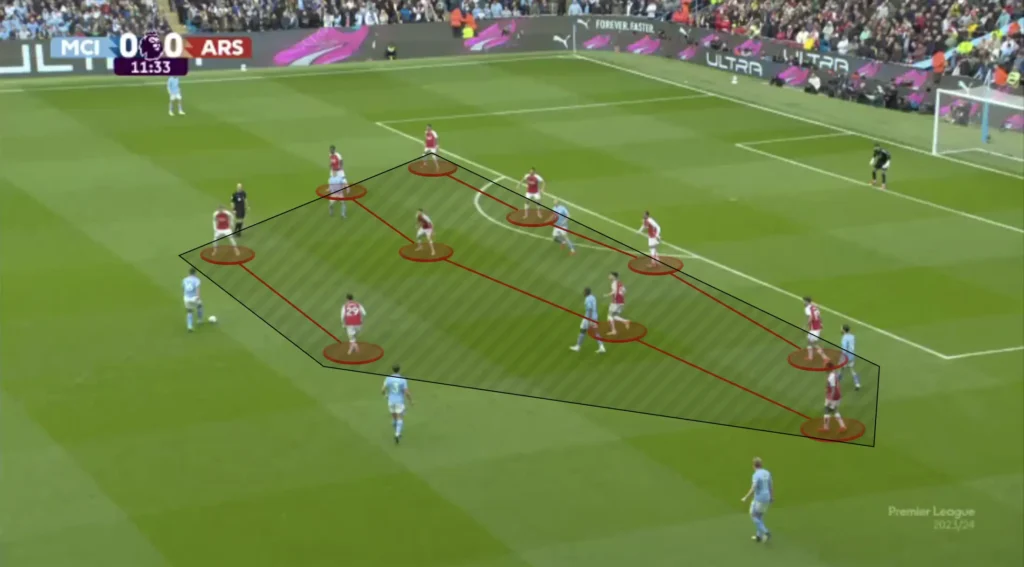
Any breakdown in these phases — a midfield line that lags behind, a winger who fails to tuck in — stretches the team and opens dangerous spaces.
Why Compactness Wins Games
Football is ultimately a game of space. Attackers aim to create it; defenders aim to deny it. Compactness is how defending teams tip that balance.
The benefits are clear:
- Opponents find it harder to progress the ball.
- Attackers are forced to receive under pressure.
- Defensive units can double up in key areas.
- Distances between players remain small, conserving energy and keeping defensive transitions organized.
When compactness is lost, the punishment is immediate. One vertical gap can allow a midfielder to receive on the half-turn. A stretched line can be split by a single through ball.
Measuring Compactness with Data
Historically, compactness was judged subjectively during video review. Coaches might say “we were too stretched here,” but this was based on perception. Now, data platforms make this measurable.
Tools like Impact Soccer can calculate how compact or stretched a team is across different phases of play. This turns a vague concept into a clear, trackable metric — one that we can monitor over time and use to back up coaching interventions.
This creates value on several levels:
- Identifying breakdowns: We can pinpoint the exact moment when compactness was lost.
- Comparing strategies: We can measure whether a tactical tweak — like a narrower midfield — really worked.
- Improving communication: Analysts can bring both numbers and video to coaches and players, making discussions more concrete.
Perhaps most importantly, this data allows us to show players what we mean. Instead of just saying “stay tighter,” we can present clips paired with numbers that illustrate exactly how compactness looked before and after an adjustment. This makes feedback clearer, actionable, and easier for players to absorb.
Why This Matters
For analysts, this solves a common pain point: spending hours clipping video to prove something we already sensed. With compactness data, we can spend less time gathering evidence and more time focusing on what matters — building solutions with the coaching staff.
For coaches and players, compactness metrics make the invisible visible. They give teams a language to talk about defensive shape that goes beyond subjective impressions, turning what was once guesswork into something measurable and repeatable.
Final Thoughts
Compactness doesn’t make headlines the way goals do, but it is one of the pillars of defensive success. By using tools that measure and visualize it, we can save time, remove bias, and improve how teams learn to defend as a unit.
Platforms like Impact Soccer make this process faster and clearer, helping us not just analyze games but teach players how compactness (or the lack of it) directly leads to chances conceded. And that, ultimately, is where analysis delivers its greatest value — turning insight into on-pitch improvement.
